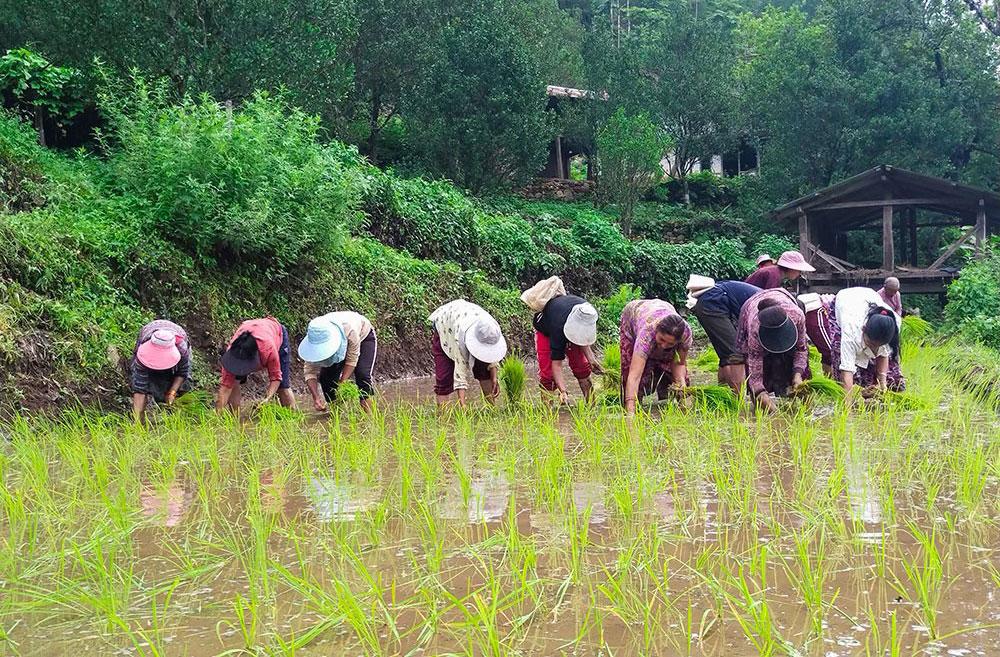MoAL to boost domestic production to ensure food security

The inflation rate for agrifood in Bhutan has been increasing, affecting consumers preferences and choices. In the 13th Plan, the Ministry of Agriculture and Livestock's (MoAL) plans to create enabling environment for investment, infrastructure development, and policy interventions to increase production and access to food. The inflation rate for agrifood in Bhutan has been increasing, affecting consumers preferences and choices. In the 13th Plan, the Ministry of Agriculture and Livestock's (MoAL) plans to create enabling environment for investment, infrastructure development, and policy interventions to increase production and access to food. Inflation is a complex issue, driven by several macro-level socioeconomic factors prevailing in the country as well as in the countries from where ere Bhutan imports food. For example, food inflation increased to 5.45 percent in February, 2025. Within the food category, the food and non-alcoholic beverages index recorded an increase of 6 percent, while the overall increase for February stood at 3.38 percent. Thinley Namgyel, secretary of MoAL, at the recent meet-the-press session said that the objective of the ministry is to achieve food and nutrition security. "To that end, increasing affordable domestic food production is one of the major focus areas." As per the 13th Plan document of MOAL, Bhutan will increase paddy production from 40,000 metric tonnes (MT) to 54,000 MT; maize from 25,000 MT to 32,000 MT; chili from 4,800 MT to 7,600 MT; potato from 38,000 MT to 44,000 MT; milk from 44,000 MT to 74,000 MT; and eggs from 86 million to 174 million. "A planned investment in the agrifood sector is crucial for Bhutan looking at the growing demand for foods and beverages, domestic production and increasing imports," he said. For instance, Bhutan imports between 70 and 75 percent of rice from India, and if the price of rice increases in India due to factors such as a rise in the price of inputs, then the price Bhutanese consumers pay is naturally going to be high. "Similarly, poor harvests in India due to weather conditions, climate change, or other calamities constraint import supply, thereby increasing the price of food commodities," the secretary said. Other challenges include outbreak of diseases. For example, with the outbreak of African Swine Fever, the import of pork is restricted. As the supply of pork is constrained with consistent demand in place, the price of pork increases. The secretary mentioned that managing food inflation is a complex and multifaceted issue with a number of factors responsible for price fluctuations. "It is not only about how much food we produce domestically and at what cost, but also factors like food imports, pests, diseases, and weather, which could increase the cost of food. The issue, thus, requires concerted efforts and the roles of various ministries and agencies." Interventions to reduce productions, as per the secretary includes enhanced production, which will help reduce prices of food items and also reduce imports. "Therefore, the priority has always been placed on increasing domestic production of agrifood commodities while also enhancing the distribution systems within to improve physical access to the food commodities." "While a multi-sectoral approach is needed, various efforts by the Ministry in the agrifood sector have the potential to play a key role in addressing food inflation," the secretary stated. Moreover, through the cost-sharing mechanism, the Ministry provides essential inputs such as: seeds and seedlings, chain link fences, greenhouses, value-addition technologies, and livestock sector support. Farm mechanisation is another area to curb the labour costs that contribute to nearly 70 percent of production expenses. "To mitigate this, the Ministry continues to provide farm mechanization support in the 13th FYP, reducing dependence on manual labor and lowering overall production costs," he said. Challenges and interventions Bhutan's small-scale and scattered farming system makes logistics a major challenge in agricultural marketing. High transportation costs and limited market access further constrain the sector. "To overcome these barriers, the Ministry is investing in cold storage facilities to minimize post-harvest losses, warehouses, and agro-processing centers to enhance product longevity and value, and integrated supply chain solutions for efficient farm-to-market linkages," Secretary Thinley Namgyel said. Secretary explained that to modernize market access, the Ministry is promoting digital platforms for online agricultural marketing as well as strengthening farm-to-market linkages through cooperative-based marketing initiatives. Bhutan's economy is projected to grow steadily at 9.8 percent this year from 4.9 percent last year. Meanwhile, the agricultural sector is expected to grow modestly at an average rate of 1.5 percent, driven by improvements in livestock production. "Moreover, to enable investment in agriculture, the Ministry is facilitating low-interest credit access, such as through the Economic Stimulus Plan (ESP), ensuring that farmers have financial support to sustain and expand their operations," the secretary said.
EMAIL SUBSCRIPTION
Join our email list for the latest updates from FCBL.